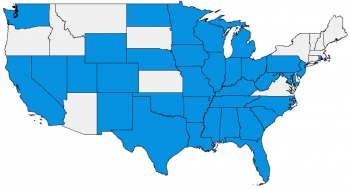EDA: Helping Businesses in Columbus, Ohio, Grow and Hire
Guest blog post by Matt Erskine, Acting Assistant Secretary of Commerce for Economic Development
By helping regions plan for their economic future, and by giving businesses access to the advanced tools they need to compete in the 21st century, we can make sure that the U.S. economy grows and creates the well-paying jobs that are key to our long-term prosperity. I got a first-hand look at such efforts today in Columbus, Ohio, when I had the opportunity to participate in a roundtable with local economic development leaders and visit the facilities of the Ohio Supercomputer Center.
One of the groups I met with was Columbus 2020, a regional public-private partnership that was created to leverage central Ohio’s research and academic institutions and its diverse industries, with the goal of better positioning the area to be the fastest growing economy in the country. It is doing that by working to retain and expand businesses already located in the region, attracting new businesses, leveraging the region’s research assets (such as its colleges and universities) to make it more attractive to entrepreneurs and startup businesses, and improving the region’s civic infrastructure.











